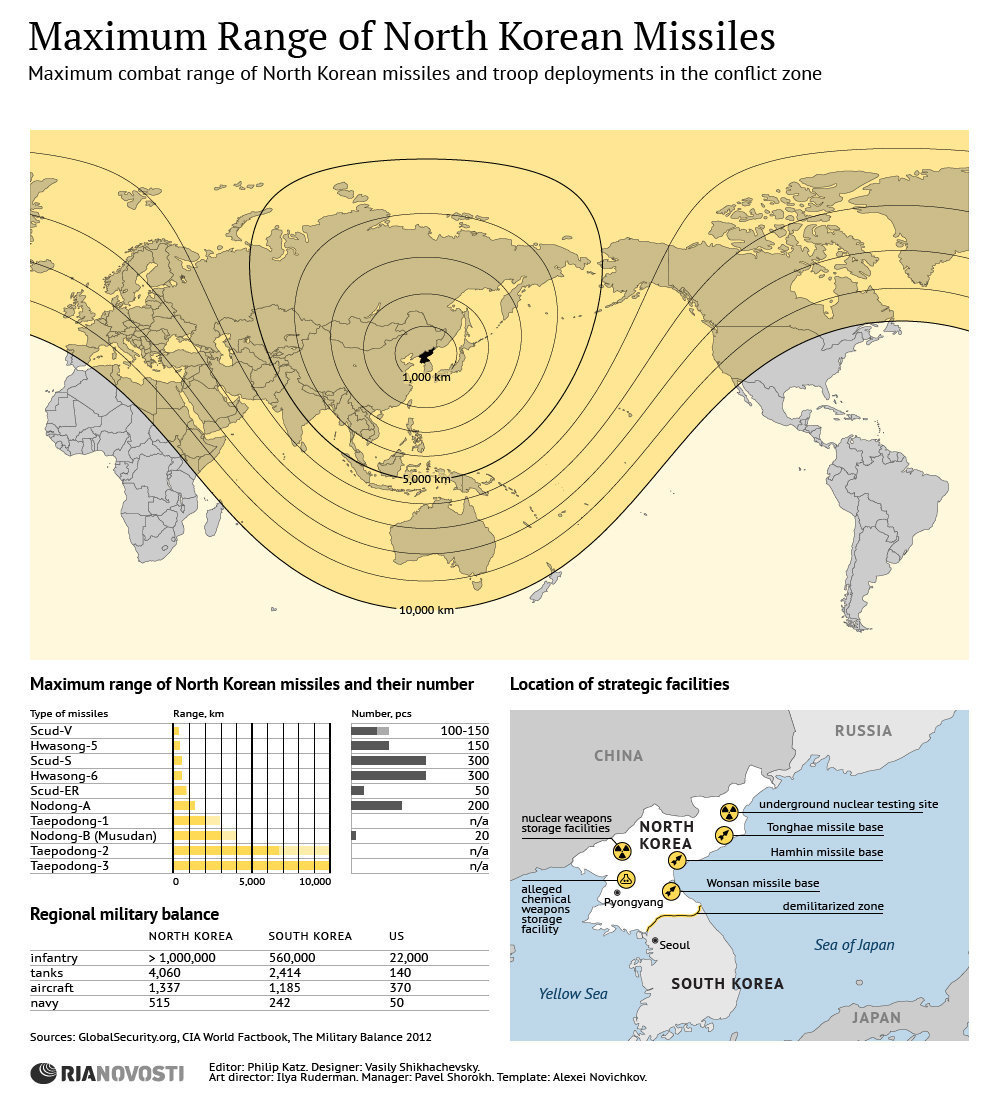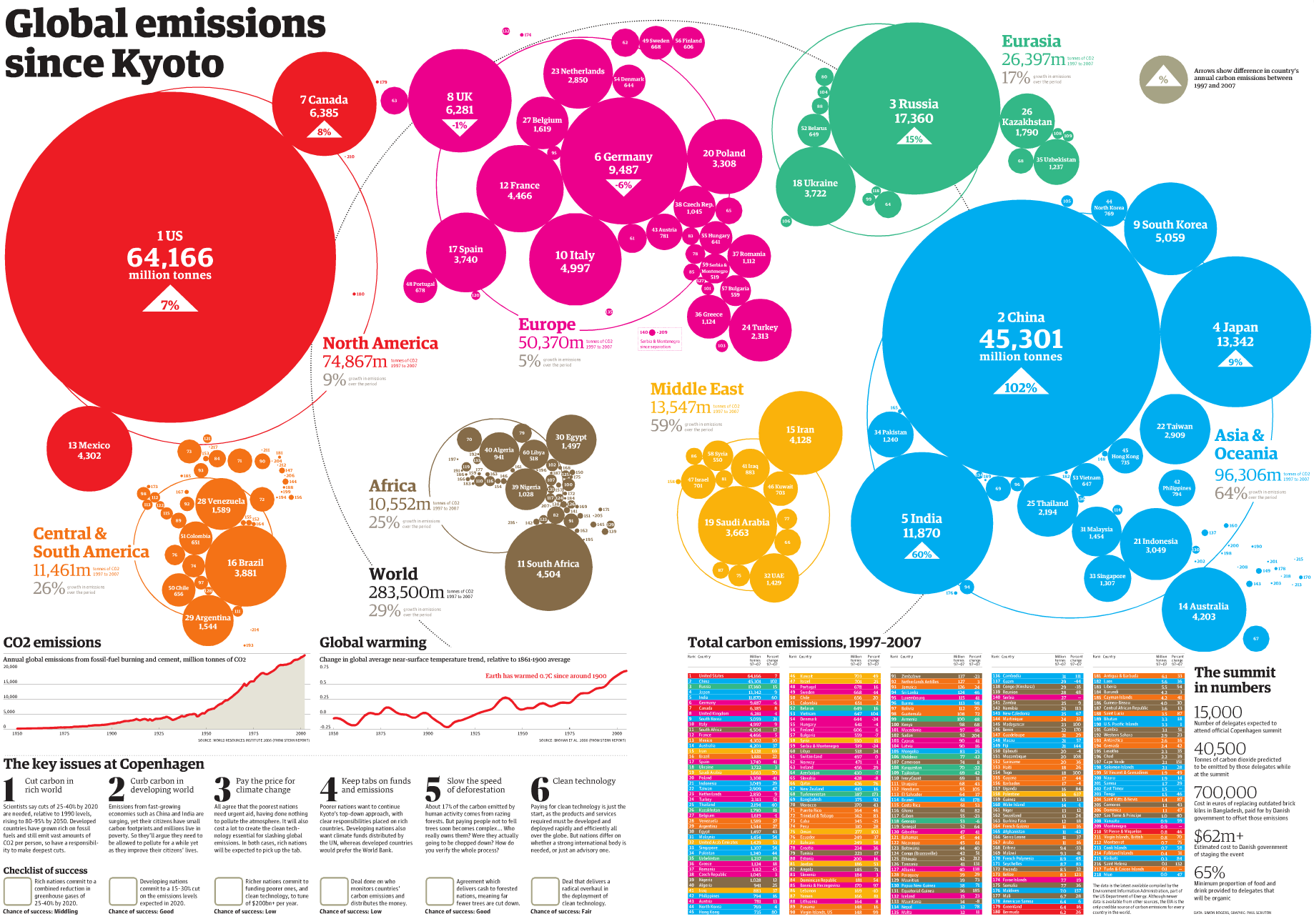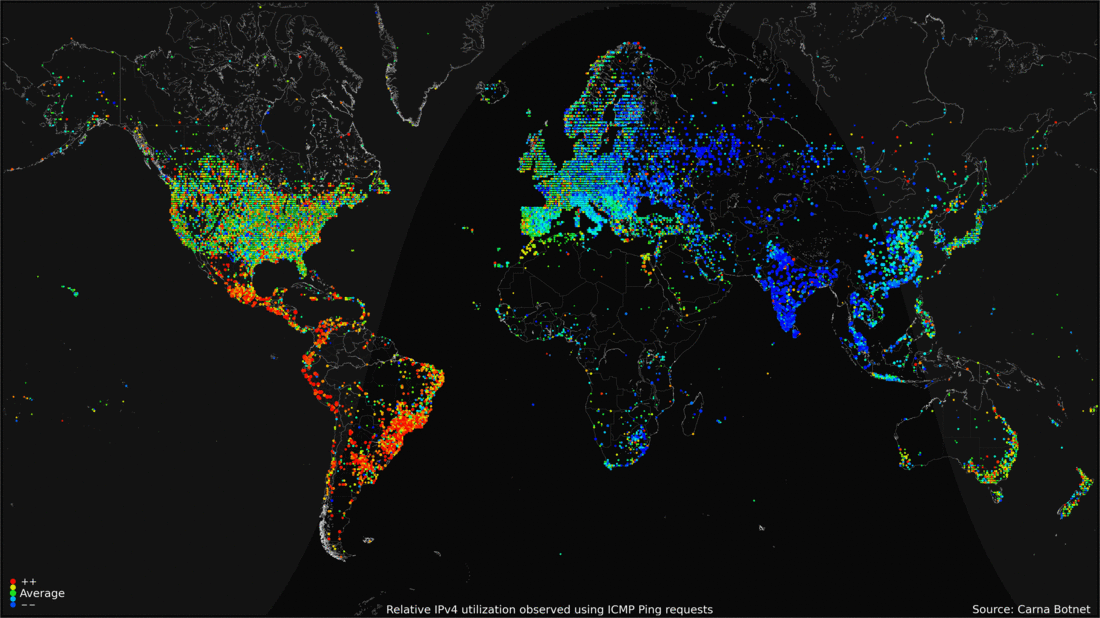
North Korea possesses a variety of missiles with different range capabilities. On one hand, there is the Scud-V with a range of less than 1,000 Km. that will easily reach South Korea, on the other there is the Taepodong-3 with a range of 10,000 Km. that could potentially reach the U.S. and Canada, as well as Europe.
In terms of balance in the conflict zone, North Korea outnumbers South Korea and the US forces combined in number of troops, tanks, aircraft and navy vessels.
Source: News Agency Ria Novosti
Suggested reading: The Brookings Institution: North Korea and Nuclear-Armed Missiles: Calming the Hyperbole








